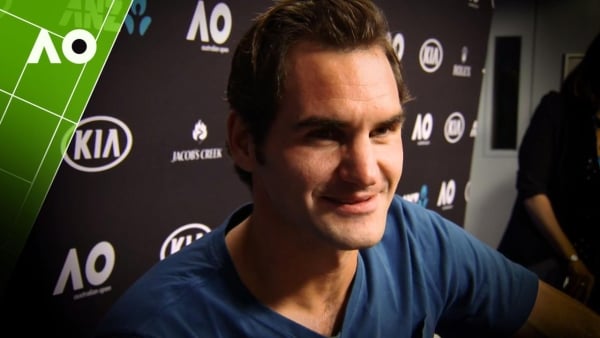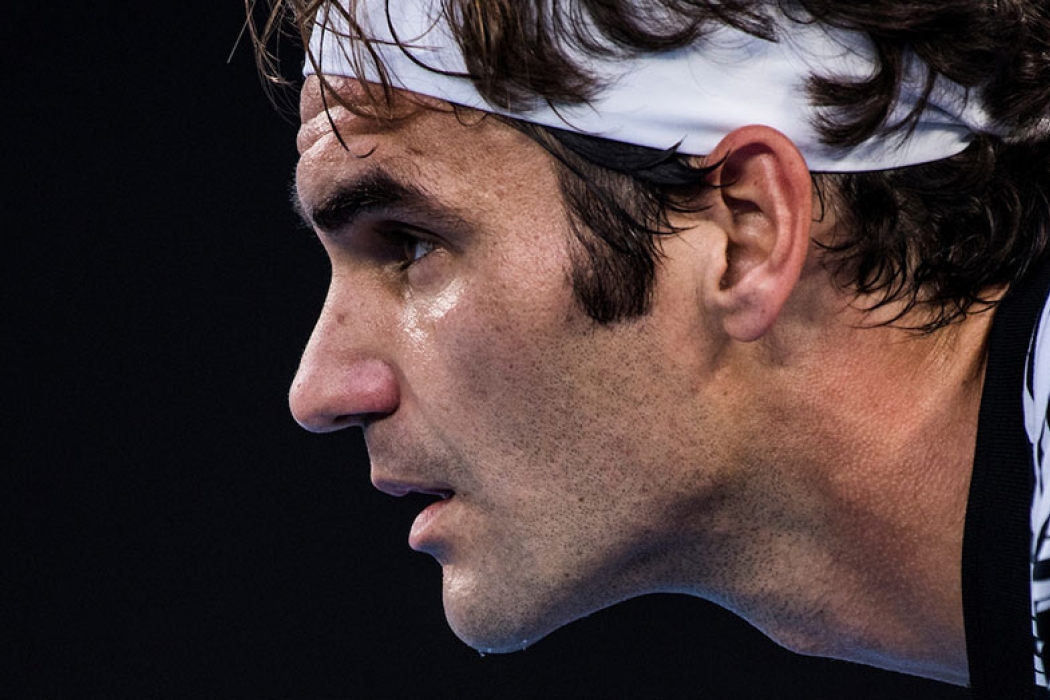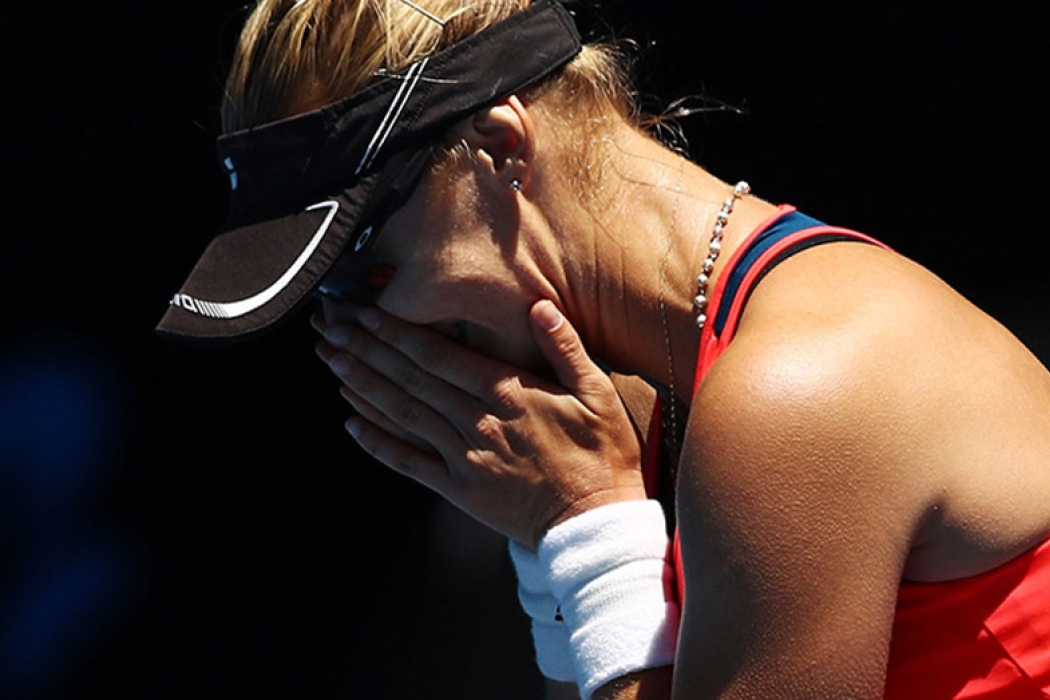"We're going to party like rock stars tonight."
Those were the words of Roger Federer after beating Rafael Nadal in a classic final at the Australian Open that few might have seen coming despite the pair being tennis behemoths.
And it has been five years already.
Federer's fifth Australian Open title in 2017 aged 35 marked one of his greatest achievements in the sport after his comeback from a knee injury that began when running a bath for his twin daughters.

Nadal started his own comeback from a wrist injury.
Indeed, when Federer helped open Nadal's academy in Spain just months earlier, the exhibition they intended to play gave way to using sponge balls against juniors, said the ATP.
Federer's return to Australia came at the Hopman Cup prior to AO 17, packed houses watching the Swiss as he downed Dan Evans and Richard Gasquet in singles in Perth, suffering a narrow defeat to Alexander Zverev.
"I thought he played very well," Heinz Guenthardt, Switzerland's Billie Jean King Cup captain and a doubles Grand Slam champion, told AusOpen.com. “Extremely relaxed, very aggressive. And I thought it was interesting for once that he wasn't a favourite because of the circumstances.
"I just wondered if that would allow him to play just a bit looser than he normally would do."
The answer seemed to be yes as it would turn out but the draw certainly did Federer no favours, paired in the same half as then world No.1 Andy Murray and top 10 regulars Tomas Berdych, Kei Nishikori and Stan Wawrinka.
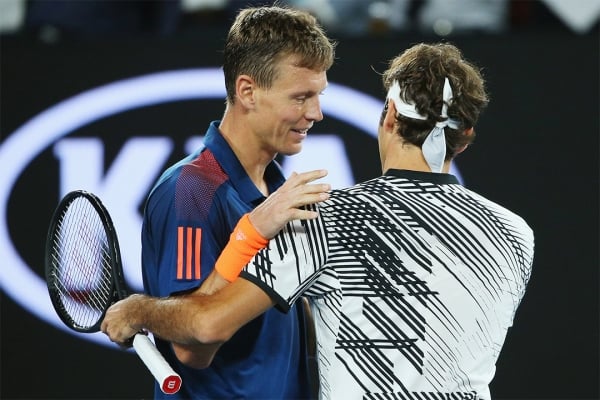
All had beaten Federer, although head-to-head records overall had gone overwhelmingly against the latter trio.
His seeding of 17 represented his lowest since being No.15 at Wimbledon in 2001 in the infancy of his career, before Federer truly became Federer.
Even Federer's opener against the flashy Jurgen Melzer presented danger. A former top 10 pro himself who previously downed Federer, the left-hander's shoulder issues in 2016 forced him to go through qualifying.
Federer overturned a break deficit deep in the first set, losing the second, before pulling away 7-5 3-6 6-2 6-2.
He then saved a pair of set points in the third against qualifier Noah Rubin in a 7-5 6-3 7-6(3) victory prior to pulling off a result that foretold of an extended stay at Melbourne Park.
Federer crushed a shellshocked Berdych – the man who dashed his Olympic hopes in 2004 and began 2017 with a strong semifinal showing in Doha – 6-2 6-4 6-4 in a quickfire 90 minutes.
No wonder Berdych's coach at the time, Goran Ivanisevic, proclaimed, "Against Tomas it was like a tennis lesson. A free tennis lesson on centre court. Too many people watching."
Tennis fans are always watching Federer, often with 'RF' caps and signs of 'Shhh! Quiet, Genius at Work' in tow. They hope for another comeback from his lingering knee issues later this year.
Federer met and overcame Kei Nishikori, one of his favourite players to watch, he has said, 6-7(4) 6-4 6-1 4-6 6-3 in the fourth round. He struck a dazzling 83 winners in nearly three-and-a-half hours of play.
By that result, two-time defending champion Novak Djokovic exited at the hands of qualifier Denis Istomin in a monumental upset, and more good fortune seemed to benefit Federer when Mischa Zverev stunned his expected quarterfinal opponent Murray.
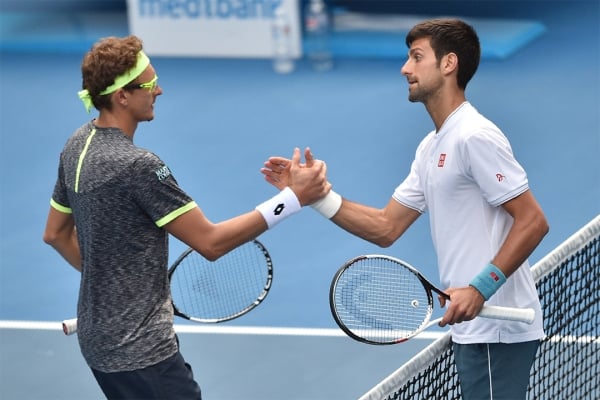
Federer beat Zverev 6-0 6-0 in their previous match and despite the quarterfinal not being that straight forward, still eased past the serve-and-volleying lefty 6-1 7-5 6-2.
His next challenger was longtime friend and compatriot Stan Wawrinka, who had triumphed at the last Grand Slam played in New York and opened his account at majors in Melbourne in 2014 by toppling Nadal.
Federer won all 13 of their previous hard-court encounters and there was no sign of that changing when he grabbed a two-set advantage.
But after taking a medical timeout, Wawrinka levelled and held a break point at 1-1 in the decider – after Federer took a rare medical timeout ahead of the fifth.
Federer turned defence into attack on the point, Wawrinka missing his backhand wide down the line after being lured forward. A double fault gifted Federer a break for 4-2 and Wawrinka never recovered.
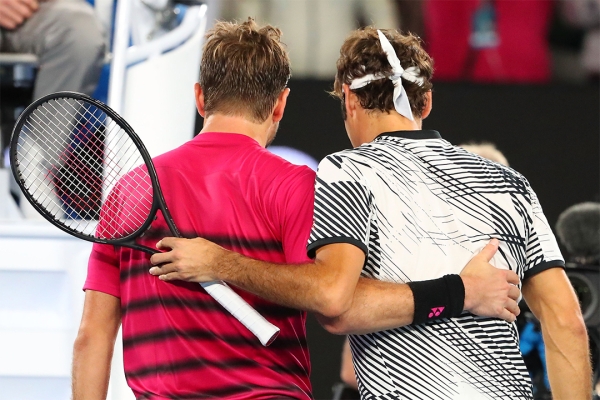
"It's gone much better than I thought it would," Federer told reporters after the Wawrinka victory. "That's also what I was telling myself in the fifth set. I was talking to myself, saying like, 'Just relax, man.' The comeback is so great already. Let it fly off your racquet and just see what happens."
His biggest test was yet to come, however.
Nadal – who beat Grigor Dimitrov in five sets and five hours a day later in his semifinal – had gotten the better of Federer six straight times at majors as part of a 10-year streak.
The 2009 Australian Open finale in five sets followed Nadal ending Federer's reign at Wimbledon in 2008, 9-7 in the fifth set, and an altogether different outing in the 2008 French Open final. A near perfect Nadal surrendered four games on the red clay.

Such was the hurdle Federer had to overcome.
But he did, reversing a 3-1 deficit in the fifth, breaking back for 3-3 after a Nadal forehand on game point clipped the tape and went wide with Federer on the stretch.
"I thought the dynamic in the match was a lot different than a lot of finals in the past between the two," Guenthardt, who commentated on the thriller for Swiss TV, said. "It was almost strange that he was 3-1 down."
Federer broke again in a game that featured a 26-shot rally and fended off two break points in the final game to prevail 6-4 3-6 6-1 3-6 6-3 in three hours, 38 minutes.
A challenge by Nadal on the last point delayed Federer's celebrations, but celebrate he did when his title was official.
Tears of joy for Federer replaced those of despair in 2009.
He won three five-setters at a Grand Slam for the first and only time in his career and became the first man since Mats Wilander at Roland Garros in 1982 to register four top-10 scalps on the way to bagging a major.
"This is beautiful, but it's still much better, the (other) trophy," Nadal said with a laugh during the trophy presentation, looking first at his runner-up plate, before glancing at the Norman Brookes Challenge Cup awarded to the men's winner.
Nadal could emulate Federer and win this Australian Open aged 35 after his foot injury.
If that happens, it might elicit the emotions Federer felt.

"The magnitude of this match is going to feel different. I can't compare this one to any other one except for maybe the French Open in '09," Federer said, reflecting on his spell in Paris that completed his Grand Slam collection. “I waited for the French Open, I tried, I fought. I tried again and failed.
"Eventually I made it. This feels similar, yeah."
Following the hype and drama of 2017, Federer went onto win his sixth Australian Open in 2018, while Nadal was comprehensively outplayed by Djokovic in 2019.
However, the Spaniard's through to his sixth AO final in 2021, against Daniil Medvedev, as he looks to reach the zenith in Australia for the first time since 2009.
